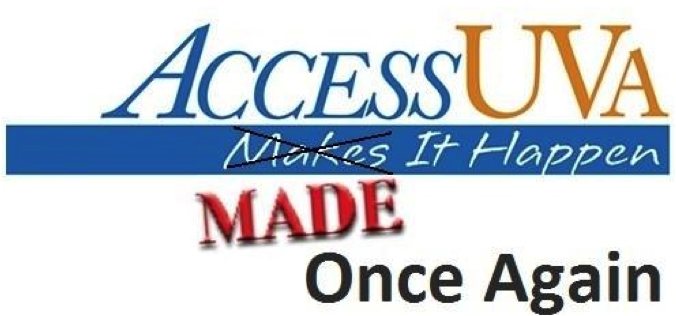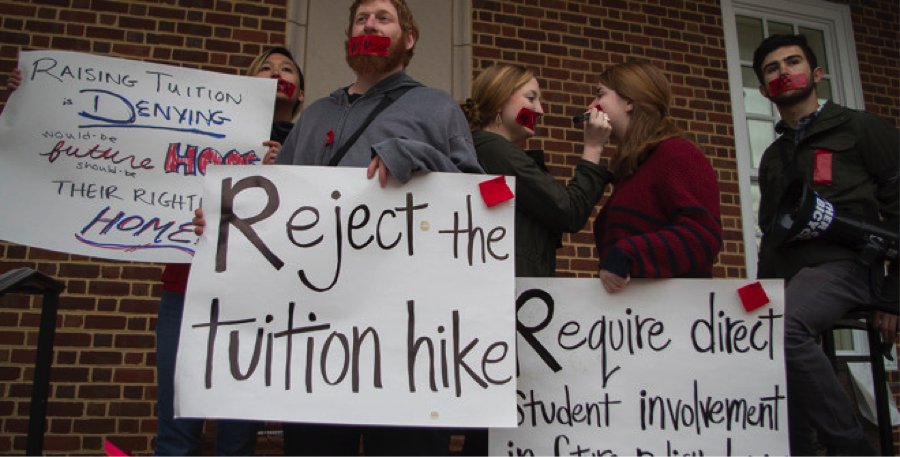They say wishes upon a star don’t come true.

But that’s what happened last week when U.Va. announced it will restore parts of the financial aid cuts it made to the college’s flagship “no loan” AccessUVa program for low-income students.
Last year, U.Va cut financial aid only for the poorest students on campus and told them to borrow up to $28,000 in student loans. But last week, U.Va largely reversed course. Low-income Virginian students will now be expected to borrow no more than $4,000 over four years; middle-income Virginian students $18,000 over the same. That’s pretty good.
A year and a half ago, I was shocked to learn that U.Va. – one of the richest public colleges in the country with its $6 billion endowment – was cutting the very financial aid program that provided me the opportunity to earn a debt-free education. In response I started a grassroots campaign through which my fellow Wahoos along with over 9,000 citizens reminded U.Va. of its obligations as a public university to provide college opportunity to talented, low-income Virginians and a diverse student body environment for all.
U.Va listened. In fact, by taking huge strides to lower student debt burden this year – even if it’s not zero as it used to be – U.Va. is again taking part in a national movement of early college “promise” programs that sends a clear message to students: “Yes, I can go to college.”
That’s something worth rooting for, even if all the details of the new financial aid policy aren’t perfect. Here’s a breakdown of what’s in store:
- In order to help pay for the reduced debt caps for in-state students, incoming first-year Virginia students in the Fall of 2015 and Fall of 2016 will each face a $1,000 increase to their base tuition. A $1 billion endowment will also be established, $15 million of which has already been raised.
- Both incoming and current Virginian students will face a 3.9% increase ($408) in base tuition next year. Out-of-state students will see a 3.7% tuition increase ($1,580).
- For Virginia students who enroll in fall 2015 or later, U.Va. will offer families an option of a four-year, fixed-price base tuition at a “reasonable premium.” The premium price has not yet been determined.
- Finally, there is a statement of “intent”, whereby the Board will seek to keep to a 3.5% annual tuition increase for the next seven academic years starting with the 2016-17 school year. These tuition increases are based on an estimated 2.5% to cover projected inflation + 1%.
Now, I sympathize with U.Va. students who were upset and protesting the tuition increases. Aside from procedural and transparency issues, the students’ anguish reflects an understanding response to “sticker shock.” Total tuition and fees are expected to rise by $1,470 for new Virginian students, which represents an 11% increase in just one year – a double-digit increase that far exceeds any national one-year change (the highest was 9.5% between 2009 and 2010, according to the College Board). That’s the number that the media and headlines have focused on.

There’s also a question of why the Board chose to raise tuition by 3.9% (and theoretically by 3.5% in future years) when inflation is currently at record lows and national median household income growth has remained flat two years in a row, after two consecutive years of decline.
But despite these imperfections, the potential impacts for in-state students are still huge. To be able to tell an elementary school student in Virginia Beach whose family makes 200% or less of the poverty level that they’ll only have to borrow $4,000 to go to college is a big deal. To be able to assuage middle-class families in Fairfax who feel squeezed (because they don’t qualify for as much federal government financial aid) that they won’t have to borrow more than $14,000 is also a big deal. Finally, all families will have the option of receiving a four-year locked-in tuition schedule so they can better plan ahead financially for their children’s college costs. These are the type of “promises” our country needs more of.
I’m proud U.Va. is making progress with these types of promises to its in-state students – after all, it still remains a public university. And now U.Va. can rejoin the ranks of promise initiatives like the UNC Chapel Hill Carolina Covenant, the Stanford University tuition-free promise (announced today!), the Tennessee Promise, the Kalamazoo Promise, and even President Obama’s aspirational Free Community College initiative, that give students an early and upfront commitment to affordability.
It’s true, U.Va. still has more work to do. But hopefully, this new financial aid policy will help improve U.Va.’s economic diversity – where it still resides in the bottom 5% of all colleges nationally when it comes to low-income and working class student enrollment.
But I’m optimistic, because U.Va. is now sending a loud and clear message to students and their families that their state’s flagship university is affordable and not out of reach. U.Va. stepped forward, and now it’s our turn to hold U.Va. to that promise.